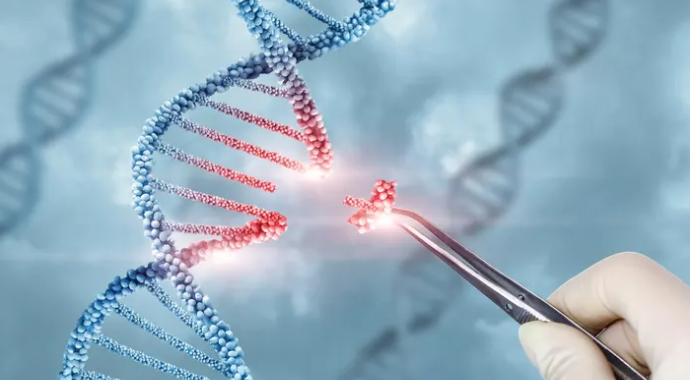On Dec. 8, the Food and Drug Administration approved a new treatment to cure sickle cell disease using a gene-editing tool developed by CRISPR (Clustered Regularly Interspaced Short Palindromic Repeats) Therapeutics.
Sickle cell disease is an inherited blood disorder that prevents hemoglobin in red blood cells from carrying oxygen throughout the body, sticking together and blocking blood vessels to cause painful complications. According to the American Society of Hematology, the average life expectancy for females with sickle cell disease is 55 years, while the life expectancy for males is even lower at 49.3 years. For the nearly 100,000 Americans who suffer from the effects of the disease, the approval may at last provide access to a restorative treatment option.
The newly approved treatment is designed to work by inserting modified genes into the body through disabled viruses to help the patient’s red blood cells produce normal hemoglobin, cutting out the sections of DNA that cause the sickle shape. When CRISPR was first created in 2009, scientists were unaware of where exactly the genes were being inserted, leading to them inadvertently being placed in areas vital for living conditions. Yet nearly fifteen years later, due to the development of the more proven tested CRISPR-Cas9 technology, scientists are now able to program genes to be inserted into a host cell precisely in their preferred location.
Biology teacher Tom Chung commented on the significant progress gene editing technology has made since first being introduced, which may make it a more reliable option to consider from a medical standpoint.
“[CRISPR-Cas9] is a highly proven technology, it’s more evolved, and becoming more active,” Chung said. “Thus, if you had asked me even just 10-15 years ago if this is okay, I would have been more on the side of saying ‘Heck no!’ But because they have now developed this ability to insert genes relatively more accurately and the risks are far less, is it worth the risk? Well it’s better than before.”
Despite its potential, the treatment’s hefty price tag presents a major obstacle to patients, given its cost at over $2 million per individual, which does not include the cost of associated care, such as hospital stay or chemotherapy. Over a projected ten-year period, the cost would amount to $176,000 a year, which far surpasses the standard U.S. cost-effectiveness threshold of $100,000 a year. In terms of insurance coverage, many health plans either do not cover the approved gene therapies that have already been launched into the commercial market or implement policies limiting the number of patients that can access the therapy in a year.
“There are few who can afford that kind of fee,” Chung said. “And not only that, but insurance companies don’t cover procedures on an experimental level, even if there’s proof to some degree. So the accessibility is obviously an issue, and this becomes a socioeconomic argument. But if I’m just a pure scientist, not an applied scientist, and the whole notion of discovery is the advancement of humankind, then I don’t think that cost should be a factor of helping other people.”
Regarding the permanent alterations the treatment can make to human DNA, ethical concerns have been raised about the nature of gene editing therapy. In a biological sense, there are two primary types of cells that make up the human body – somatic and reproductive. While changing somatic cells does not carry the risk of transferring genetic mutations to offspring, altering reproductive cells means every cell in the developing embryo will carry the mutation, passing the modified genes down to future generations.
Although Chung acknowledges that the development of the treatment was well-intended, he, like many other scientists, cannot help but express concern about the ethical nature of modifying a human being’s DNA.
“No matter how foolproof a procedure is, you have to ask, ‘What is that risk?’” Chung said. “When you do plastic surgery, you modify your face or you modify something. That’s superficial. In other words, it doesn’t change who you are. But when you change DNA, that’s a whole different level of change. And so the question to people is, ‘Are you willing to take that risk to benefit these individuals [who suffer from sickle cell disease]?”
As gene editing technology continues to undergo a rigorous testing process, both its advantages and drawbacks are taken into consideration by the scientific community. Though gene therapy is capable of providing about 10 additional healthy years of life for the average sickle cell patient, both the financial and ethical cost that comes with saving these lives remains a hotly contested matter.










Cynthia Fey • Dec 20, 2023 at 9:46 am
Such important news!!! HUGE. This rivals the discovery of AIDS therapies. Thank you for covering this historic moment!